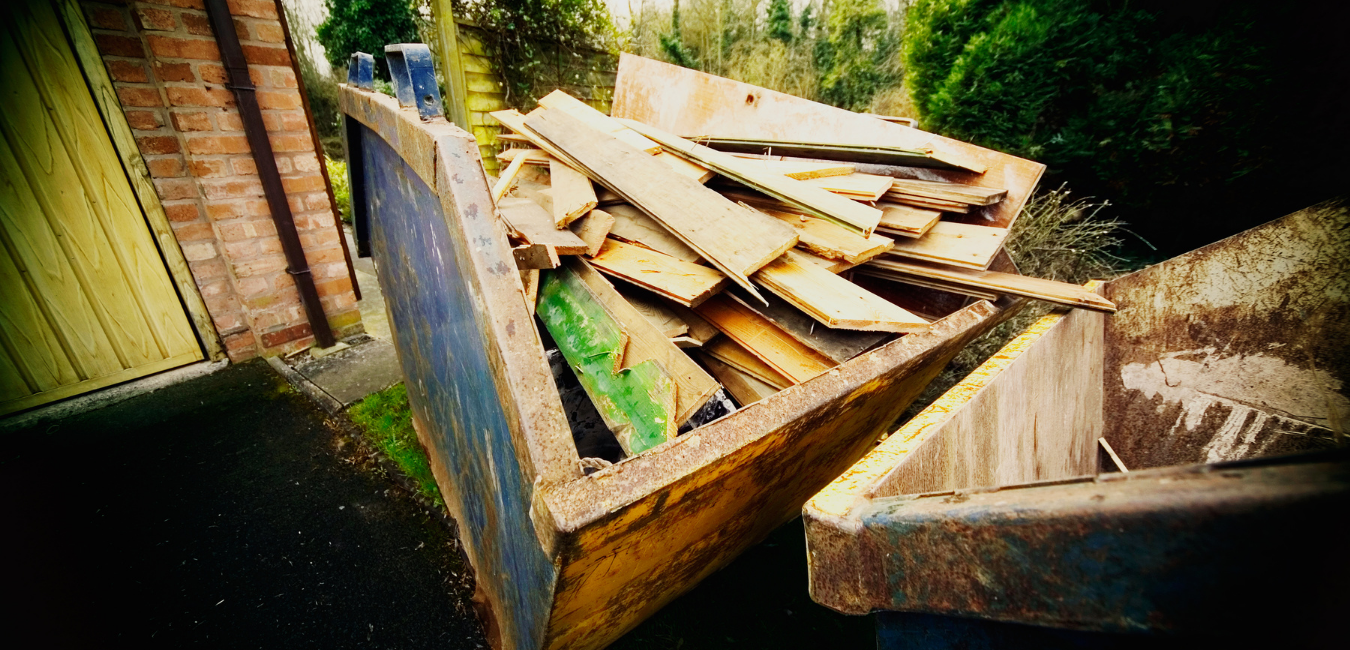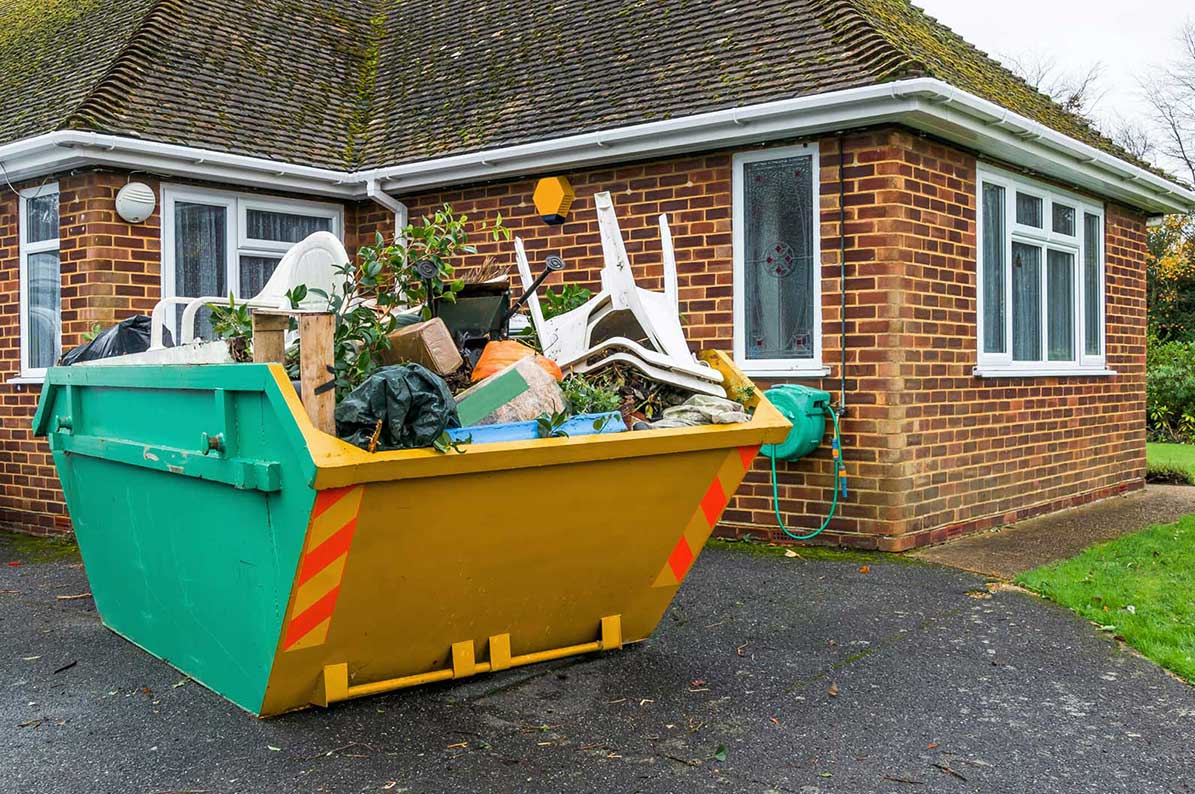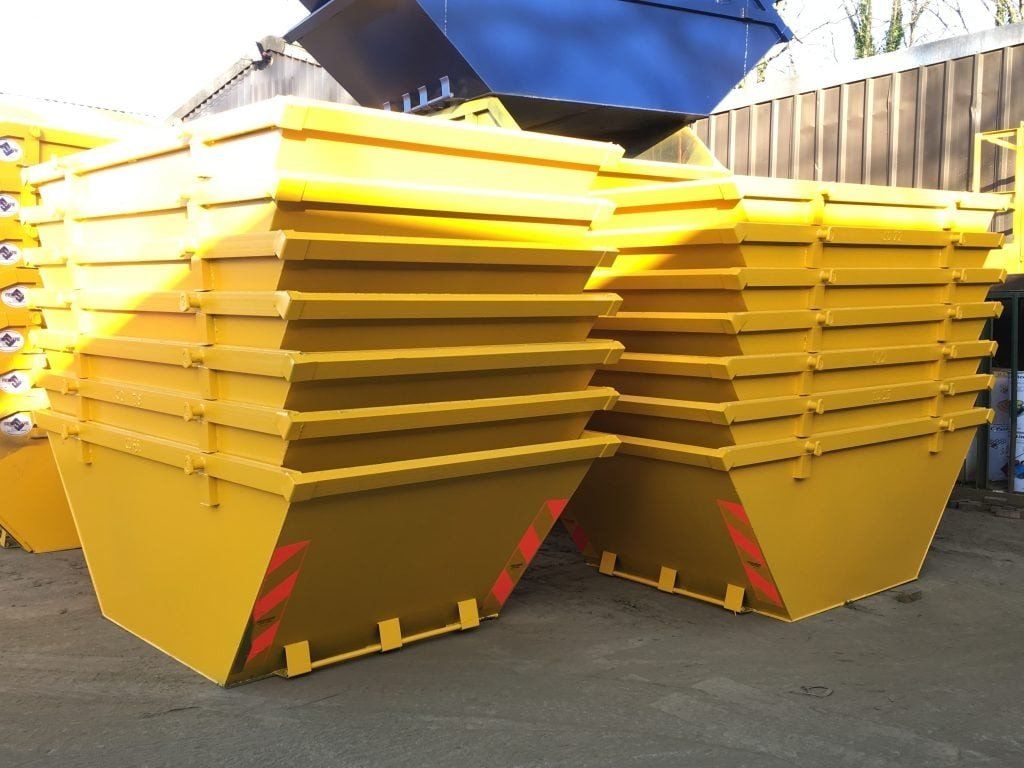Skip Hire: What You Need to Know
Whether carrying out a spot of home DIY, garden landscaping, office refurbishment or heavier construction, hiring a skip is often the most effective and convenient way to dispose of your waste. Skip hire is a relatively straightforward process, so long as a few simple considerations are made, which is why here at Bedford Skips we’ve drawn up a checklist of common issues and FAQs to help you out…
What Can and Can’t I put in a Skip?
Skips are a versatile way of disposing of most waste, but understanding what you can place in them will help you to avoid issues or unexpected charges. It’s perhaps best to consider what you can’t dispose of in a skip, and assume that most other items are generally fine.
- Asbestos
- Solvents and paint
- Oil, petrol, diesel
- Electrical equipment (WEEE)
- Toxic materials
- Gas canisters or bottles
- Batteries
- Vehicle tyres
- Household appliances
- Medical waste
- Fluorescent materials
- Plasterboard
- Most liquids
Hazardous wastes should be disposed of separately, and by licensed waste experts.
Where can I put my Skip while in use?
If your property doesn’t include a driveway or an off-street area, you will have to leave your skip on the roadside. This means obtaining a permit from the local council responsible for your road, and limits your skip size to 8 yards. Better quality skip hire companies will often sort permits out on your behalf.
What shall I look out for in a Skip Hire Company?
The primary indicator of quality is a waste carrier’s licence issued by the Environment Agency. This will prove that assessment and regulation of the company has taken place, and that their practices are up to standard. Beyond this, those that can provide a competitive quote and arrange for full delivery and collection of your skip are more desirable, as are those that are willing to obtain road permits for you.
What’s the Maximum Weight a Skip can hold?
As you might expect, the answer to this depends entirely on the size of the skip in question. For a rough calculation, a single cubic yard can hold around 1,000kg (one metric tonne). It’s important to note that if your skip will be filled with garden waste, such as soil and rubble, there is an 6 yard skip limit, as the weight would be too great for the collection trucks to handle if the skip was any bigger. Similarly, every skip has a fill level to avoid overfilling, as this would make collection unsafe.




©2023 ABSS WM Limited | All Rights Reserved
Trading as Bedford Budget Skips
VAT Reg: 260705129
Company Reg: 10577917
Waste Carrier Licence: CBDU254278
Area Coverage - Cheap Skip Hire in Ampthill, Aspley Guise, Astwood, Bedford, Biddenham, Brogborough, Bromham, Campton, Cardington, Clapham, Clophill, Cople, Cotton End, Cranfield, Elstow, Great Barford, Hardmead, Haynes, Houghton Conquest, Husborne Crawley, Kempston, Lidlington, Lower Shelton, Marston Moretaine, Maulden, Millbrook, Milton Ernest, Moggerhanger, Moulsoe, North Crawley, Oakley, Ravensden, Renhold, Ridgmont, Salford, Salph End, Shortstown, Stagsden, Stevington, Upper Shelton, Willington, Wilstead, Wilden, Wixams, Wootton, Aspley Heath, Barton, Beeston, Biggleswade, Bletsoe, Blunham, Bolnhurst, Broom, Carlton, Chicheley, Chawston, Clifton, Colesden, Colmworth, Emberton, Eversholt, Everton, Felmersham, Flitwick, Flitton, Gravenhurst, Greenfield, Hatch, Harrold, Henlow, Ickwell, Lavendon, Meppershall, Newton Blossomville, Northill, Newport Pagnell, Old Warden, Pavenham, Pulloxhill, Radwell, Roxton, Sandy, Sharnbrook, Shefford, Sherington, Shillington, Silsoe, Stanford, Steppingley, Tempsford, Thurleigh, Toddington, Turvey, Upper Caldecote, Westoning, Woburn, Woburn Sands, Wyboston, Arlesey, Astwick, Bletchley, Bozeat, Eaton Socon, Eynesbury, Great Brickhill, Gamlingay, Wellingborough, Rushden, Kimbolton, Langford, Little Brickhill, Little Staughton, Lower Stondon, Melchbourne, Milton Bryan, Odell, Olney, Pertenhall, Poddington, Potton, Riseley, St. Neots, Souldrop, Staploe, Stoke Hammond, Stotfold, Swineshead, Wrestlingworth, Yardley Hastings, Yeldon. Services include skip hire, grab hire, property clearance, waste collection and more. We offer commercial skip hire, wait & load and pay-as-you-tip service at our waste transfer station located in Kempston, Bedford. Contact us on 01234 350 636 today for free, instant quote.


